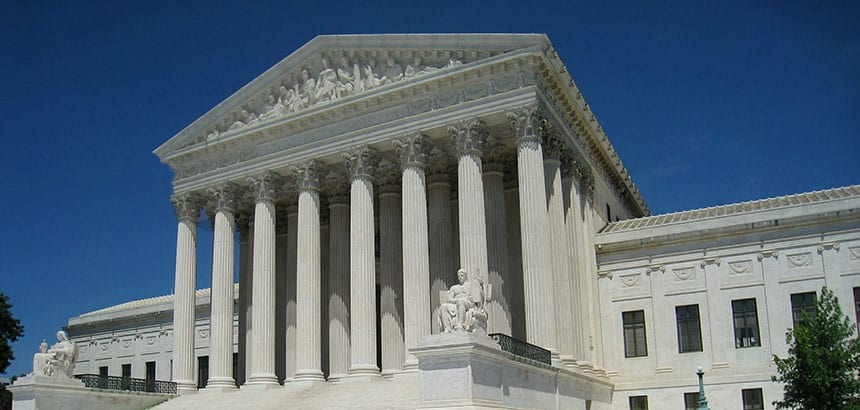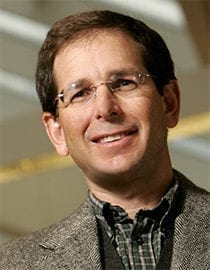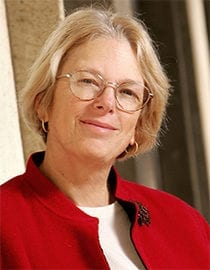
By Gwyneth K. Shaw
When the U.S. Supreme Court issued its decision in the decade-old Google v. Oracle case earlier this month, the 6-2 finding reverberated through the intellectual property field. After multiple attempts by lower courts, the majority of justices ruled that Google was protected by the “fair use” provision of copyright law when its engineers used functional specifications of the Java Application Programming Interface (API) platform — originally created by Sun, which Oracle acquired in 2010 — to build its Android operating system.
The decision shielded Google from potentially billions of dollars in fines for using the 11,000 lines of interface code. But it also left open somewhat the question of whether application programming interfaces, or APIs, can be copyrighted at all.
To sort out the case’s implications, and whether the ruling will impact other elements of intellectual property law, the Berkeley Center for Law & Technology (BCLT) gathered four experts on April 20 for a roundtable discussion.
The panel featured Berkeley Law professors Peter Menell and Pamela Samuelson — each of whom wrote amicus briefs in the case — as well as George Mason University law Professor Sean O’Connor and Tom Goldstein, who argued Google’s side before the Supreme Court.
BCLT Executive Director Jim Dempsey moderated the panel, and kicked the discussion off with a key question for Goldstein: Why did the Court’s decision speak to the fair use question, but not explicitly to whether the material was copyrightable?
Goldstein, a Supreme Court veteran, said he intended to push the copyrightability issue. But it became clear as the oral argument progressed that there simply wasn’t support from the justices on that issue.
“On the other hand, there did seem to be a pretty broad sense that we were right in the end result,” he said. “Fair use, given its flexibility, really did provide really the easiest pathway forward.”

Yet, the Court didn’t entirely sidestep the copyrightability question, Menell said.
“I read the opinion as methodically building its fair use analysis on the thinness of copyright in the API elements and its functionality,” he said. He noted the Court’s emphasis on interoperability being a legitimate engineering target and the importance of not locking up method calls used by millions of developers.
O’Connor noted that he finds the Court’s decision problematic, since it muddles certain distinctions set forth by Congress in addressing some of these issues.
“This really is an attempt to get to copyrightability through fair use, and I think that does do some damage to fair use because you’re using it for the wrong purpose,” he said. “If the statute is wrong, Congress should have to fix it.”
Complex questions
The case hinged on precedents set several decades earlier by lower courts, which characterized computer programs as largely utilitarian. In the majority opinion, Justice Stephen Breyer compared APIs, which essentially allow programs to communicate, to a gas pedal or a QWERTY keyboard. The implementation code, by contrast, actually tells the machine what to do.

Samuelson, who co-authored an amicus brief with Berkeley Law colleague Catherine Crump on behalf of dozens of IP scholars, said the Court’s decision had breadth across both questions and was consistent with decades of precedents. Congress may have used inapt terminology when writing the controlling statute, she said, but that’s because lawmakers were trying to make sure copyright wouldn’t be interpreted too broadly in software cases.
“The cases have really been quite clear that interfaces are not copyrightable, and implementations are,” she said.
Briefs from industry experts (including those written by Samuelson and Menell) seemed significant to the case, Goldstein said, since the justices appeared aware of the limitations regarding their knowledge of complex issues. He joked that while everyone misses the late Justice Ruth Bader Ginsburg, who was steeped in these topics, Oracle might have missed her the most.
“The Court really was looking to the communities much more than it was looking to lawyers like me,” Goldstein said. “Our broader strategy was, ‘This can’t be right — look, the entire world is on our side, at least the smart people.’
“The Court was recognizing that this was a widespread industry practice.”
So what happens now? Will this ruling make waves in other areas where fair use and copyright are in play, including music and art cases?
Samuelson said she wouldn’t be surprised to see a set of cases be appealed based on the Court’s decision, particularly one involving an Andy Warhol painting based on a photograph.
Menell agreed this decision could have broader repercussions. Contemporary music cases have rarely raised fair use questions, but some disputes over hip-hop songs indicate that Google v. Oracle could have an impact.
“In those kinds of cases, fair use probably becomes a bit more usable. The Supreme Court, just as it says it’s not dealing with copyrightability and then it does, says at the end that this decision is limited to software — which it isn’t,” Menell said. “Their language about how to think about market effects is going to find its way across the caselaw.”